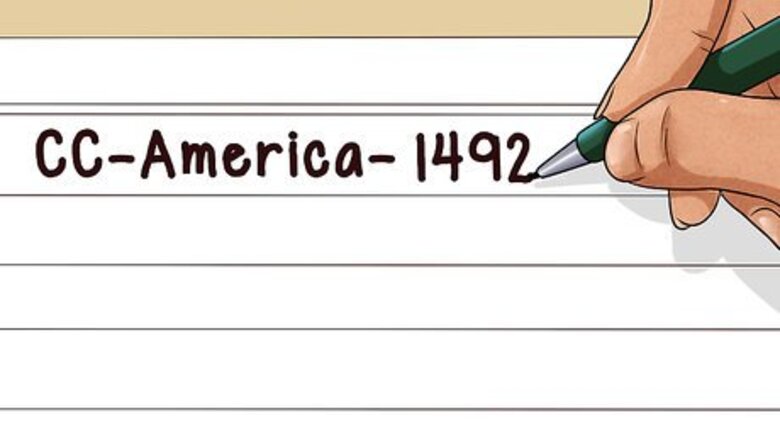
views
Creating Individual Notecards
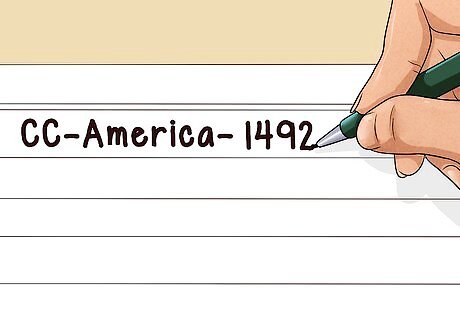
Keep the text brief. Stick with short phrases instead of full sentences. Use abbreviations for words when possible. You will want to review the cards quickly and condensing the text makes sure that only the most important ideas make it onto the card. The very process of choosing the card’s text will kick-start the learning process. For example, if you are studying history you might write, “US” instead of “United States.” A shortened sentence might look like, “CC-America-1492,” the longer version being “Christopher Columbus arrived in America in 1492.”
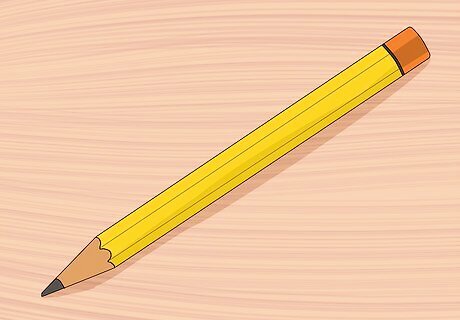
Write with a pencil. If you work with a pencil you can modify your notes as you continue to study. A pencil also will not fade through the paper or notecard allowing you to see the information from the other side. If you do choose to use a pen make sure it’s ink will not bleed through.
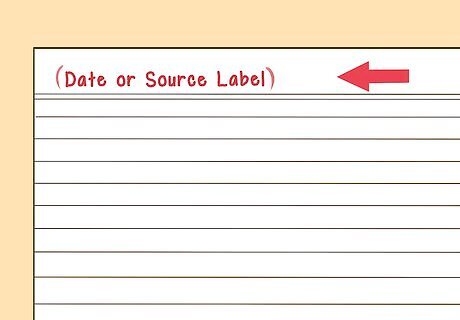
Include a date or source label. At the very top of each card write down the date that the information came from in your class notes or the page number of the source and the abbreviated source name. You want a way to track back the information from your card to the original source. This is helpful when citing or if you choose to sort your cards. If you are making notecards for multiple classes, use different colored cards or keep them in rubber-banded stacks.
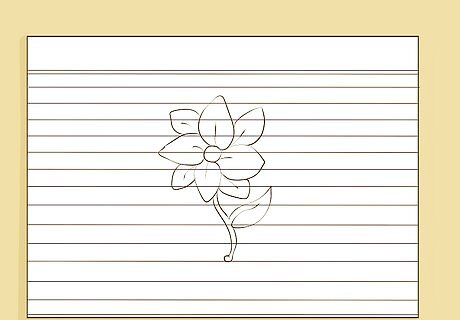
Create picture cards. There is no rule that notecards must only contain text. For visual learners, drawing a quick image on a card might be the most helpful. Keep the image fairly basic and make it easily recognizable. Label parts of the image, if that will help you study. For example, if you are taking a biology class you might create a rough sketch of a cell and label the parts. You can then put the “key” on the back of the card. Flipping the card back and forth will allow you to learn the material. A student practicing a foreign language might draw a picture of an object, such as a flower, on one side of the card with the translation on the other side. You can also make image notecards by photocopying an image from the textbook or slide notes and then cutting it down to notecard size. If you do this many times you will create a slideshow to match your text notes.
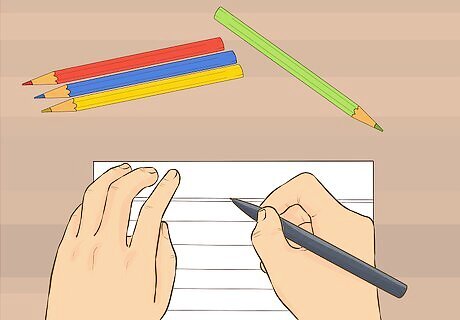
Add color. To fight off boredom and more fully engage your memory, try applying a color scheme to your cards. You could write in colored pencils, highlighters, or even fine-tipped markers. Underline particularly important information with color. Or, assign specific colors to particular card themes or topics to make for easier sorting. Have a plan when you start to use color on your cards, otherwise your cards could get cluttered and more difficult to study from.
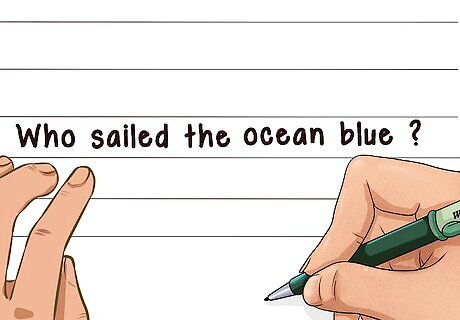
Put word games on your cards. If you’ve come up with a quick way to remember a piece of information, put that down on a card. All types of mnemonic devices (or memory boosters) are helpful when studying. Keep it simple and put only one major piece of information on each card. A history student might put the question, “Who sailed the ocean blue?” on one side of a card with the answer, “Columbus sailed the ocean blue in 1492,” on the other side. Rhyming is a mnemonic device that helps with knowledge retention.
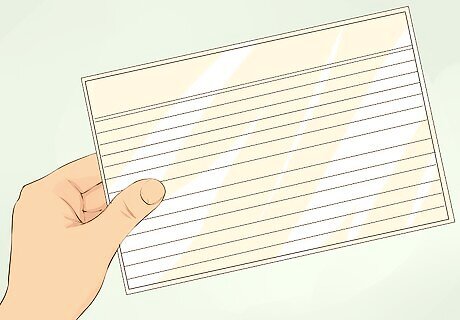
Laminate your cards. Go to a copy shop and pay to have your cards laminated. Or, use a quick, at-home laminating machine and do it yourself. Or, get small plastic sleeves to go over your notecards, available at office supply store. The point is to protect your cards from water damage, especially if you plan to use them over a long period and will carry them around.
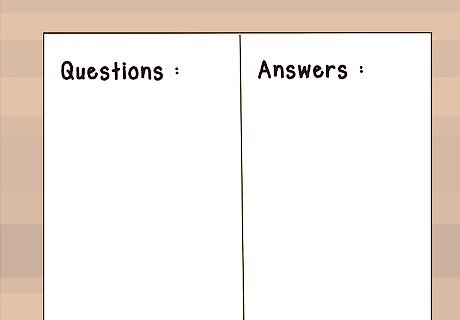
Use a piece of paper instead. If notecards don’t appeal to you for whatever reason, you can do the same basic concept using a sheet of white, unlined paper. Draw a line down the center of the page. On the left, you can write a series of questions matched with their answers on the right side of the paper. As you study simply cover up one side or the other. Shuffling is not possible with this method so make sure to mix up the order in which you study the question/answer pairs.

Test out a flashcard creation app. There are many apps available for download that can help you create and use notecards for studying. You can often get a basic version for free with add-ons for an additional fee. Brainscape, iStudious, and StudyBlue are all good options. It is helpful to read through online reviews before downloading any one app. Brainscape is an app that customizes your studying by displaying future cards based upon your past performance during card quizzes. StudyBlue is an interesting app in that it allows you to trade cards on certain subjects with students from around the globe. This is a good way to study if you want one concept explained from a variety of perspectives.
Using Notecards with Different Systems of Studying
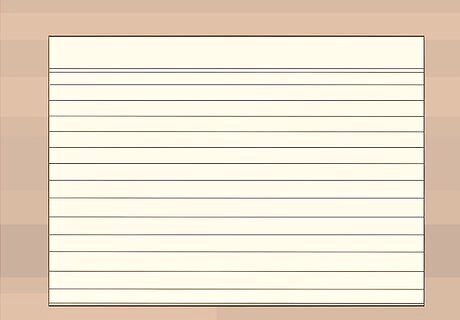
Decide on an index card format. You will want to choose a particular studying approach early on in the process. This will depend a great deal on the subject being studied and your personal preferences. Once you choose a format it is best to stick with it or only change once at most. For example, if you are studying history facts it may be helpful to create quiz questions or ID term notecards. If you are learning a foreign language your notecards will likely focus on vocabulary practice or sentence structuring.

Take notes over a specific topic. This is probably the most commonly used notecard study method. You put a topic on one side of the card and you add your notes on that subject to the opposite side. These types of cards are also sometimes called “summary” or “concept” cards. If you notice that you are putting a great deal of information on the back of one card, it may be time to split that particular subject into multiple cards. This system is also used quite frequently for quick memorization of specific terms. You put the term on one side and the definition or alternate translation on the other.
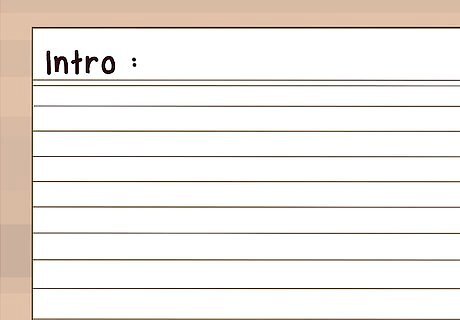
Outline your essay on cards. Your cards can also help you to write a long or short paper. Arrange your cards with notes or key points in the order that they will appear in your essay. Move the cards around until the order makes the most sense. This is much easier than re-writing entire portions of your paper. When you are ready to write simply move from card to card adding additional information or transition sentences as needed. To keep everything clear, once you’ve established the order of the cards write a brief note at the top of each regarding its final location. For example, all introduction cards might have “Intro” in the upper corner. Keep a set of notecards with your source information listed as well. One source per card. Include the title, author, publisher, publication date, etc. This information will be used to create your bibliography and references.
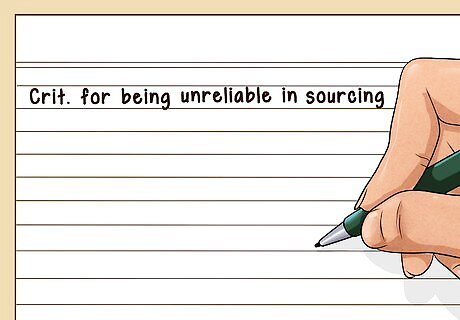
Take notes over specific sources. Whether you are writing a paper or preparing for a test over various sources, you can use notecards to keep track of your research materials. Put the title and author on one side of the card and few statements about the argument, evidence, methodology, etc., on the other side. Depending on your end goal, you could also include a few points of criticism as well. For example, “Crit. for being unreliable in sourcing.” As you take notes over sources, make sure to include quotations when pulling directly from the text. Otherwise, you could accidentally plagiarize if you use these materials when writing later.
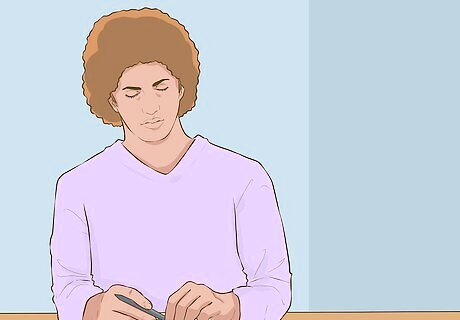
Create practice tests. Put yourself in the mindset of your teacher or professor and ask: what questions would you include on an exam or test? Which topics must be covered? And, which ones are the least important? Come up with a list of the very best questions that you can think of and then transfer them to notecards. Put one question per card, leaving the flip side for brief answers. Use your cards to create a realistic practice test. Randomly select the same number of cards that will appear on the test. Give yourself the correct amount of time to finish answering. It is also helpful to write out your answers if that is what you’ll have to do on the actual test. When you are finished, flip the cards over and check your answers. You might also approach your professor or teacher after you’ve created the cards and ask them to look them over. Not all instructors will do this, but if they do it could help you a great deal.
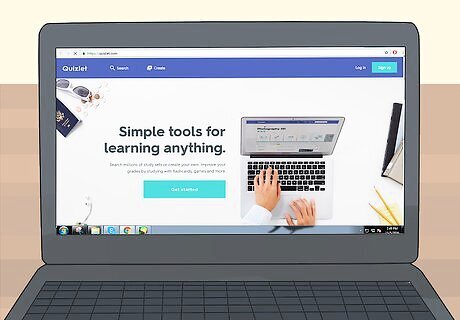
Treat studying as a game. To make studying more exciting, it might help to get a bit competitive. Some apps with allow you to engage in flashcard competitions against your peers or classmates. This is like having a study group that meets virtually. You can even set-up the competitions to follow a timer. Quizlet is one of the more notable apps in this category. You can also have a friend quiz you with your index cards by holding them up so that you can only see the front term or concept. This creates some separation between you and the answer and challenges you to remember more.
Maximizing Your Learning Potential
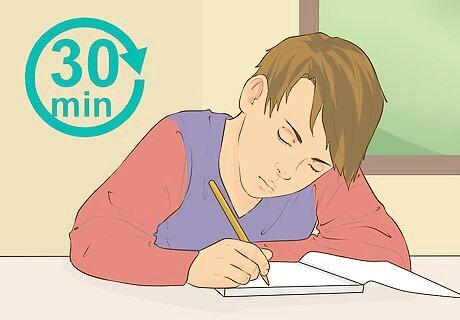
Keep your study sessions brief. Aim for 20-30 minutes at a time. Give yourself at least a 10 minute break in between sessions. Studying for long periods of time without breaks can actually breed confusion, so short intervals are the key to retention. It might be helpful to turn on a timer as you start each session. This will ensure that you take your breaks.

Make and stick to a study schedule. Procrastination and cramming can backfire when it comes time to take a test. Instead, spread out your studying over days or even weeks, if possible. Look at your exam schedule or paper deadlines and plan accordingly. Even a few minutes a day is better than none at all.
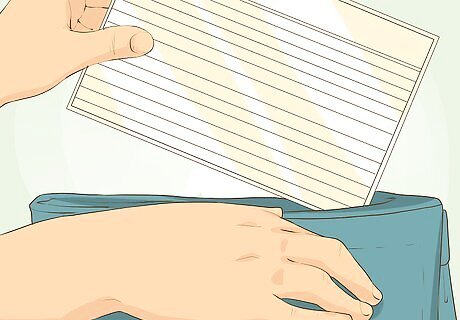
Carry your cards with you. In the period immediately before a test, keep your cards close to you and study them whenever possible. Look for a few minutes here or there in your everyday routine. If you are watching TV, study during the commercials. Repetition and exposure to the information will make the difference in retention. Get creative and use clips to hang your notecards around the room. This allows you to study while cleaning up. Or, punch a hole in the corner of your card set and put them on a key ring for easy carrying.
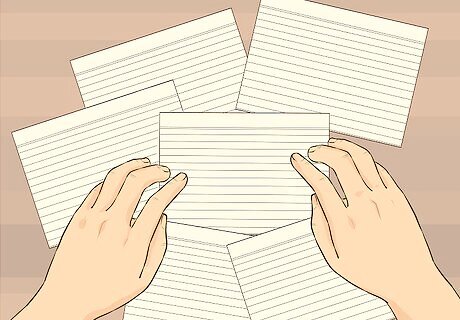
Mix up the order of your cards. Your mind will become bored if you go through your cards in the same order over and over again. Shuffle your cards, throw them on a table and mix them up, or put them in a jar and pull one out at a time. The card that you see each time should be unpredictable, just as a question will be on a test.
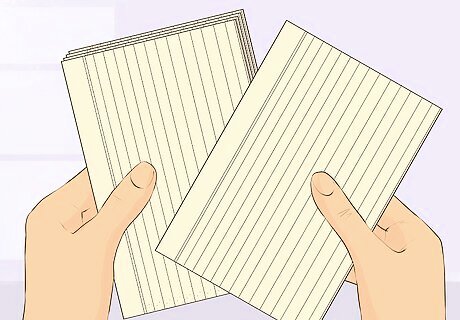
Set aside or revise the cards that you know. Once you feel comfortable with the information on a particular card, place it in a new stack with others like it. This will allow you to spend more time working on the topics or terms that you’ve yet to master. For the cards in the known stack, revise them frequently with new terms or additional information so that you're always solidifying these concepts in your mind.

Work with a study group. Get together with a group of your classmates and go through your cards together. You may find that other people covered areas that you missed and vice versa. Try to teach each other the material to test your knowledge level. Quiz each other using the cards as a question bank.




















Comments
0 comment